Ujicha
February 8, 2021 · 0 comments
By Tom Wilmot.
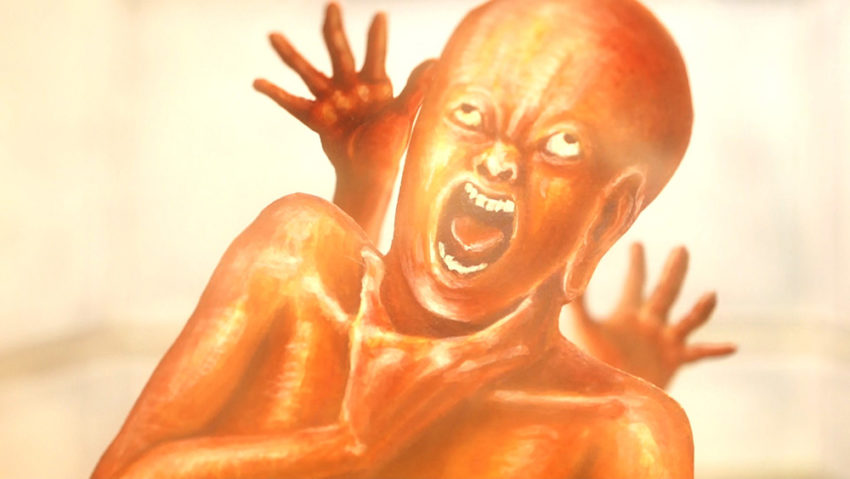
One of the most appealing aspects of animation is that the form offers so much variety. From traditional hand-drawn cel animation to stop-motion work, the medium has continued to grow, giving creators numerous ways to express themselves. And then there’s geki-mation, the production method that 35-year-old auteur Ujicha uses to bring his nightmarish visions to life, now available on UK Blu-ray from Third Window Films.
A portmanteau of gekiga – a term referring to adult-themed manga – and animation, geki-mation involves crafting puppets and props that are then moved by hand and shot in live-action. First popularised in 1976 with Kazuo Umezu’s Ghost Story: Cat Eyed Boy TV series, the style never quite caught on, yet has been revived by Ujicha over the past decade.
Third Window’s ‘The Weird and Wonderful World of Ujicha’ includes the director’s two features: The Burning Buddha Man (2013) and Violence Voyager (2018). Of the pair, The Burning Buddha Man is by far the more grotesque. It follows the teenaged Beniko (Yuka Iguchi), whose parents are killed during a spate of robberies in which statues are being stolen from temples. Soon, teenager finds herself falling deeper into a fantastical world where she learns more about the fusion of man and Buddha in order to take revenge.
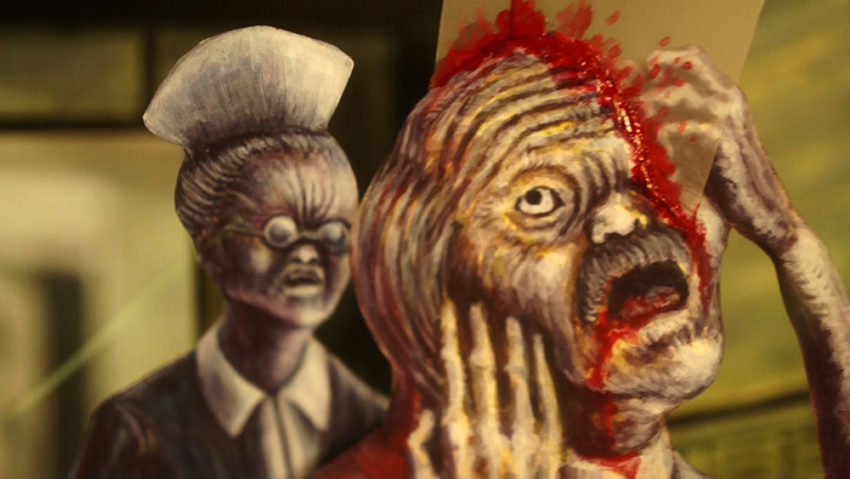
Ujicha’s puppets are extremely detailed, with all of their ugly features accentuated so much that even the innocent Beniko is unnerving in appearance. The monstrous creatures we meet during her journey sport stomach-churning designs, many of which are reminiscent of H.R. Giger’s iconic artwork. This off-putting art style plays into the horrific tone the film strives to achieve and is mightily effective.
For a movie comprised mostly of stationary puppets, there’s still a lot of movement, with no shot feeling truly static. Not only is this down to the masterful operation of props and character models, but it’s also a result of Ujicha’s fluid camerawork as he plays with depth of field and unstable shots to ensure that the film is always in motion. It’s astonishing how little time it takes to get into the groove of the visuals and see past the limitations of the geki-mation style.
Of course, this skilled craft would be for nothing if the project didn’t have an intriguing premise to delve into, and in its own bonkers way, it delivers. The far-fetched narrative involves secret societies, body-fusing, and a trip to the after-life; plot points that greatly benefit from the movie’s deranged visuals. Ujicha is clearly having fun with the story, as he pokes fun at some of the anime tropes that it incorporates, most notably when five deformed creatures join together in mecha-like fashion to form a ‘Five Monk Combination’. Touches such as these keep The Burning Buddha Man consistently entertaining, as Ujicha produces a fine first feature-length outing for geki-mation.
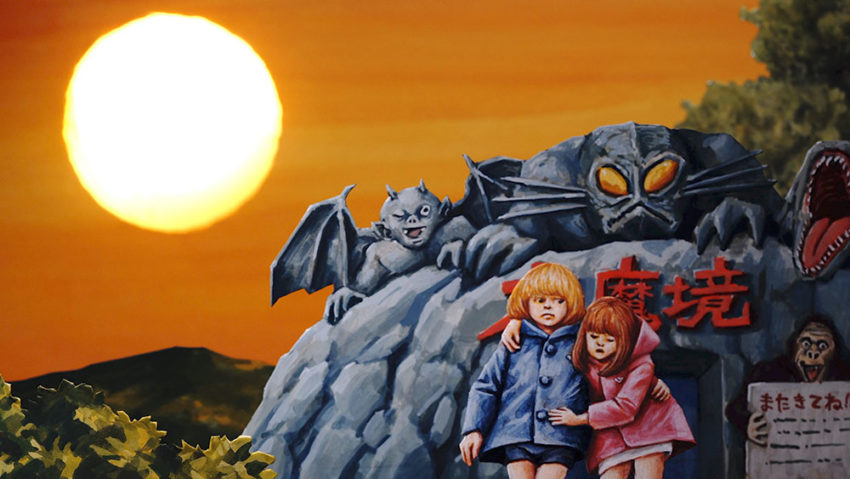
We then have Violence Voyager, which is undoubtedly the superior film of this set. The narrative follows a young American boy, Bobby (Aoi Yuki), and his friend Akkun (Shigeo Takahashi) as a trip through the mountains sees them stumble across a small theme park: Violence Voyager. After gaining admission, the two soon realise that the resort’s adversaries are deadlier than advertised and that there are deeper horrors at work in the core of the facility.
With a plot that is a little more accessible, Ujicha’s sophomore feature improves on his debut in almost every conceivable way. One of the earliest things you’ll notice is that the environments and interiors are far more detailed and colourful than anything in the film’s predominantly cave and temple-based predecessor. The character models also get an upgrade here, with the human figures given a more realistic look while still being uncanny. The puppets’ intricate design allows for greater variety in terms of movement, with arms, guns and other small features all in motion to create more seamless and engaging visuals. These improvements are topped off by ambitious camerawork from the director, who ups the ante in terms of special effects and experiments with lensing to give the feature a cinematic feel.
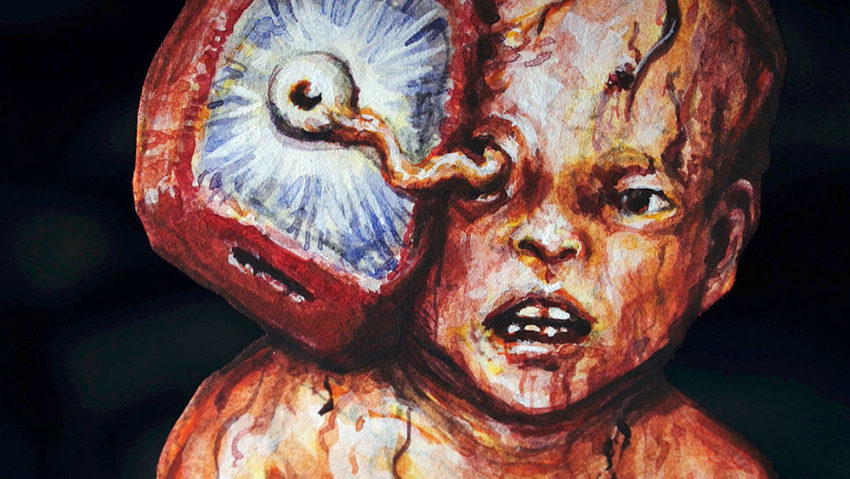
While not as overtly gruesome as The Burning Buddha Man, Violence Voyager is certainly darker in its subject matter, with the role of children being particularly disturbing. Ujicha doesn’t hold back either, putting an excruciating amount of detail into all of the mutilations that befall the unfortunate park goers. Fans of Cronenberg body-horror will feel right at home here as the film features some truly horrific transformations. The movie legitimately feels like it could have been someone’s nightmare, from its surreal imagery to the dreamlike way in which the plot unravels.
Underneath all the aesthetics, the movie offers up a fun action-adventure narrative. The colourful cast of characters, which features a cannibal robot-child hybrid and a friendly chimpanzee, is truly a delight to behold. Perhaps most importantly, it never feels as though the narrative has been compromised for the sake of the animation style. On the contrary, the film would neither be as entertaining nor as frightening were it not for the unique production method Ujicha utilises.
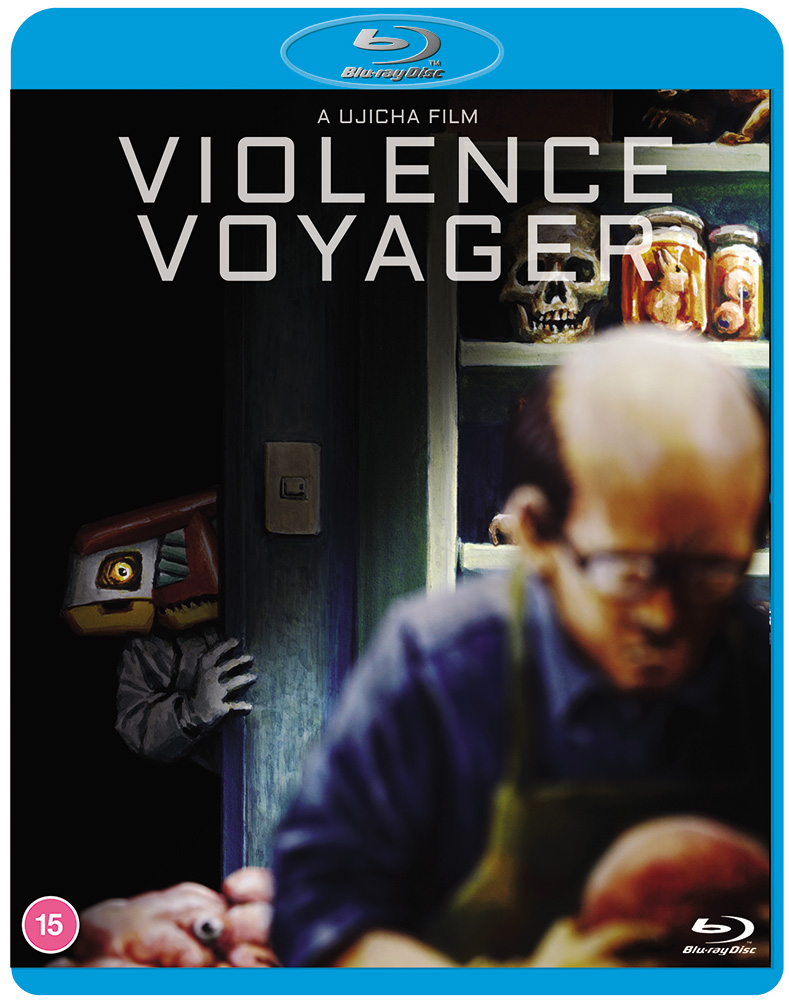
Helping to break down the crazy world of Violence Voyager is a commentary track with Ujicha and producer Reo Anzai. The pair discuss many interesting aspects of the film’s creation, from the casting of prominent voice actors to the shooting process behind certain scenes. Ujicha isn’t afraid to poke fun at his work, noting the more abnormal features on his character models and being honest about some of the project’s shortcomings. You can’t help but chuckle along as the director laughs at many of his own grotesque gags, giving you a sense of how much he enjoys his work and letting you in on the dark humour behind these otherwise shocking movies.
Ujicha discusses his influences further in a 20-minute interview in which he likens his childhood adventures to those of some of his characters… minus the murderous child-robots. The filmmaker unsurprisingly has a love for Spielberg adventure films, notably Jurassic Park, and proudly shows off the geki-mation ‘bible’ that is his LaserDisc boxset of Ghost Story: Cat Eyed Boy. His evident passion for this filmmaking process shines through, as he states that even with an unlimited budget, he’d still want to craft all of the character models himself. “Normal animation is not something I’m so interested in trying,” the director says. For the sake of geki-mation’s future, we can all hope this mindset doesn’t change.
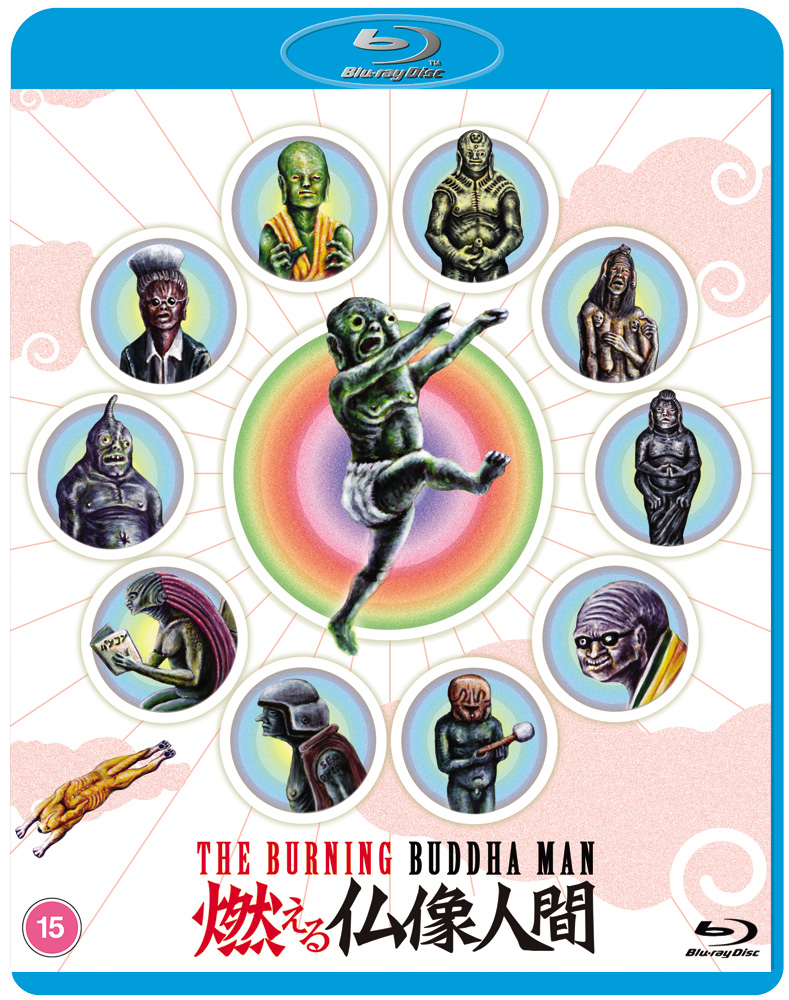
Also included in the set are three of Ujicha’s short films, the more primitive of which are The Retneprac 2 and Space Yokai War. The narratives to these shorts are near incomprehensible, and they’re accompanied by far cruder illustrations than those of later projects. However, there are techniques used in these early films that find their way into the director’s two features, so they offer valuable insight into the progression of the geki-mation craft. The most impressive of the shorts is Tempura, which was produced between Ujicha’s movies and featured as a segment in the 2014 anthology Fool Japan: The ABCs of Tetsudon. If there is anything more to be garnered from these short films, it’s that Ujicha’s twisted imagination is even wilder than his feature-length projects suggest.
With Burning Buddha Man and Violence Voyager, Ujicha has proven that, when utilised effectively, the geki-mation filmmaking technique can be used to bring some of the most horrifically entertaining, nightmare-inducing visions to life. If you buy into the madness and let it take you for a ride, you’ll be treated to an unforgettable experience.
The final extra included on this excellent Third Window Films release is an incredibly short but feverishly exciting teaser for the director’s next project. If either of his previous two films is anything to go by, we can expect another gleefully horrifying entry into this truly weird and wonderful world of geki-mation.
Ujicha: Violence Voyager / Burning Buddha Man is available in the UK from Third Window.
Leave a Reply